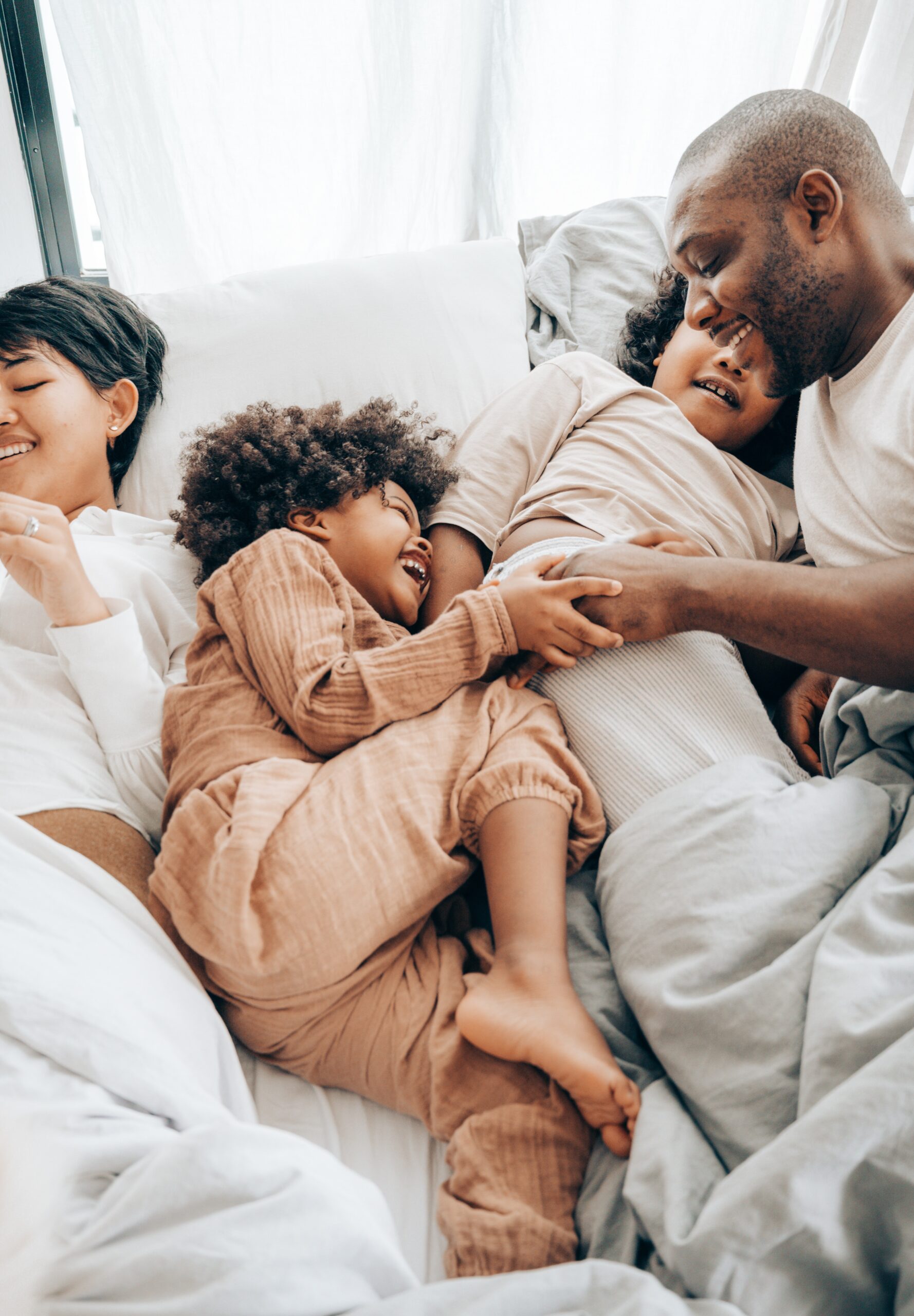You’ve probably done it, we all have at some point. Typing those words into the search engine late at night, asking “is X normal?”
And the X is something related to your baby’s sleep.
And when you did you were probably overwhelmed with the amount of advice and contradictory information you found. Like the endless sleep schedules and recommended sleep totals that are spread far and wide. Suggesting our children should neatly fit into these narrowly defined boxes, when you and I both know, boxes don’t tend to fit very well around our differently-wired kids.
Which, especially for a first-time parent, or someone parenting a highly sensitive or neurodivergent child for the first time, can you feeling anxious, overwhelmed and in a seemingly never-ending conflict with your child and their needs around sleep.
The truth is that many of our children will never fit into the sleep industry’s very expensive, billion-dollar idea of what sleep “should” look like.
A “should” that is really not based in any actual science or research around infants & toddlers.
In fact, when we look at the science, what we do see is that sleep for infants and babies is highly variable. Some newborn babies need only 9 hours of total sleep per day, while others can sleep up to 20 hours per day – and the science tells us that both of these are normal.
The science also tells us that some brains are biologically different when it comes to sleep. We know that individuals with ADHD can often have less available GABA in their brains, circadian rhythm challenges, and a delay in melatonin onset – all of which can conspire to make sleep really challenging.
And when it comes to autistic people, the research shows that it takes them, on average, 11 minutes longer than non-autistic people to fall asleep. We also know that they spend less time in the REM stage of sleep and often report their sleep to be less restorative and more wakeful.
So with all this evidence we have around brain differences when it comes to sleep, why in the world are we still propagating this idea that all babies, and children for that matter, should have the exact same needs when it comes to this part of their day.
And here’s the honest, inconvenient truth – because highly sensitive children have a stress response system that works overtime, often leaving them with a higher baseline of adrenaline and cortisol in their bodies, it can be very hard for these children to fall asleep and stay asleep on their own.
And yes, do you want to know what helps to decrease cortisol in our bodies? Touch! Deep, pressured, soothing touch. So that every single time we hold our babies close, we’re helping their bodies to release oxytocin, which sets off a cascade of hormone interactions in their body that ends up decreasing cortisol levels, helping them more easily drift off to sleep.
It all makes perfect sense!
These children need us, their caregivers, to help them regulate their bodies, their nervous systems, so that they can fall asleep.
But in the west, as you all know, there’s a huge push to have our children sleeping independently as early as possible. And yet, it’s not only normal for babies who’ve spent 9 months physically inside our bodies to want to be held close as they sleep, but it’s also often necessary for our highly sensitive children who tend to need lots of bouncing, rocking, singing and sucking (think sensory input) before their bodies feel safe and regulated enough to fall asleep.
While touch, as we already talked about, decreases cortisol and help remove an often big barrier to these kids being able to fall asleep, movement is also incredibly regulating. If you think about it – they slept inside a moving body for 9 months and suddenly we just want to expect them to fall asleep without any motion at all!? (If you want to learn more about this, I highly recommend My All About Sleep Workshop is for you. You can find it right HERE)
But here’s the deal – all babies and young infants wake through the night. It’s a protective mechanism designed to keep our children safe. Their immature nervous systems and physical vulnerability mean that they are 100% reliant upon us to protect them and nurture their needs. This can include physical needs such as hunger, discomfort, body temperature, and changing a wet nappy, but also emotional needs for comfort and closeness. The waking allows them to reorient to their caregiver, their source of food and nourishment. And for highly sensitive children, who tend to be more aware any slight internal and external discomforts in their environment and are more attuned to the proximity or distance of their caregivers, it will just take them longer than most to get to that place we all dream of – sleeping through the night.
But, this I assure you – they will eventually get there (and the workshop mentioned above gives you science based tools to begin moving in that direction).
Highly sensitive children are a gift, and their sensitivity is their superpower. But it can also make sleep really bloody challenging. Especially when their sleep journey doesn’t quite fit within the confines of what our societal sleep paradigm deems appropriate. But I promise, it’s not because you’re doing anything wrong. They’re just wired differently when it comes to sleep. And you continuing to meet their needs (as long as it’s not completely depleting you in the process) is not doing them a disservice at all.

+ show Comments
- Hide Comments
add a comment